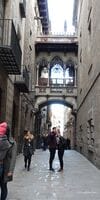The Gothic quarter or the Barri Gotic (Catalan: Barri Gotic or El Gotic, Spanish: Barrio Gotico) is a popular area, part of Barcelona's Old town and is a center.
Barcelona's Gothic quarter stretches from La Rambla (in the West) to the street Laietana (East) and Plaza Catalunya + the Fontanella street (North) to the Mediterranean coast (in the South).
The Gothic quarter covers the oldest part of Barcelona and includes the remains of the Roman walls, the famous medieval sights and churches, squares and museums. However, most of the buildings and a number of significant Gothic buildings, do not belong to the middle ages and date back to the 19th - early 20th centuries.
In the late 19th - early 20th centuries, the quarter has been transformed into a tourist attraction due to large-scale restoration project, which was timed to the International exhibition of 1929. Further recovery of existing buildings and the creation of a new neo-Gothic structures was also continued in the 1960-ies.
Currently, Barcelona's Gothic quarter is a lively tourist destination with museums, historical buildings and churches, as well as an abundance of cafes, restaurants, shops and souvenir shops.
The quarter consists of a large number of narrow streets with tightly adjacent to other buildings, leading to a small space. Most of the streets closed to regular traffic.
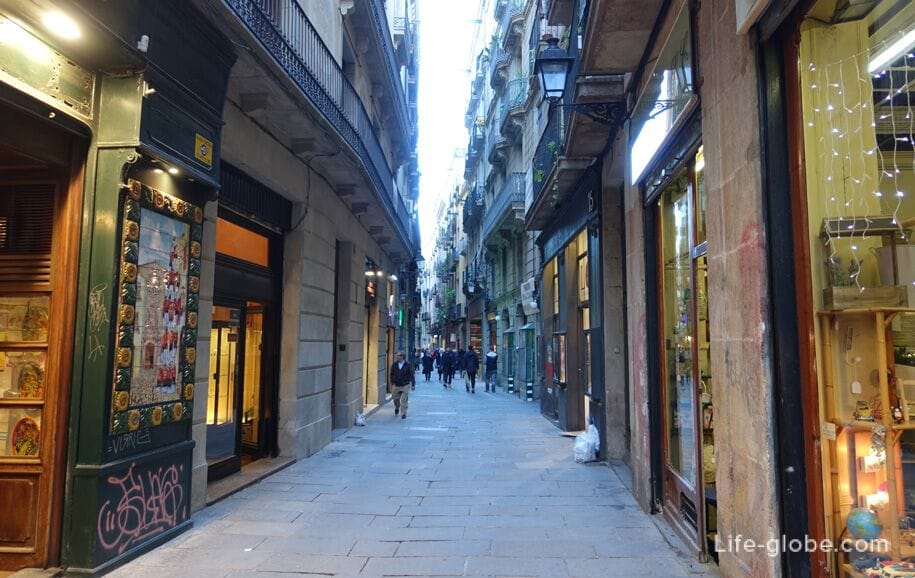


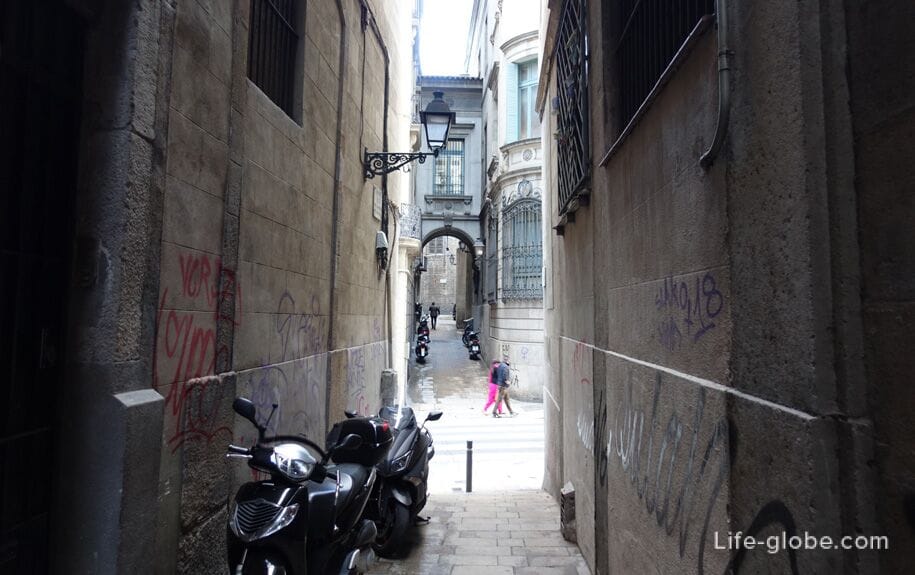
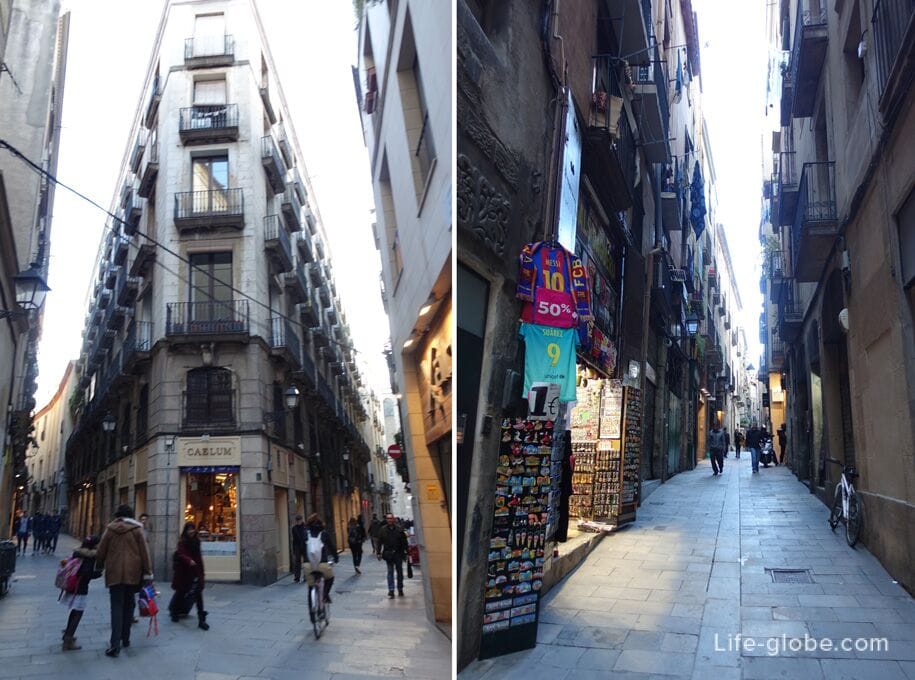
One of the main and widest streets of the Gothic quarter stands the Carrer de Ferran (Carrer de Ferran), horizontally cutting a block.
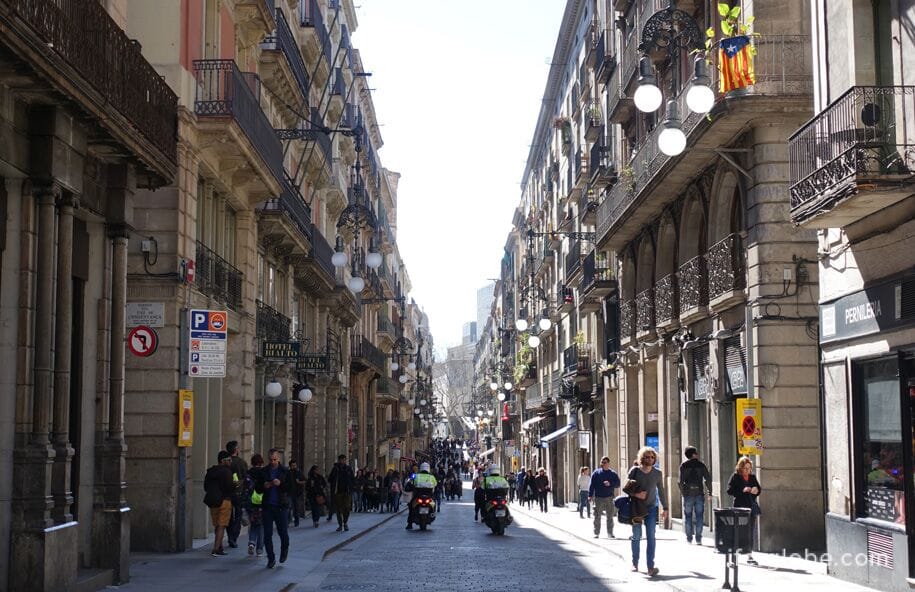
On the street is a Catholic Church in Sant Jaume (Església de Sant Jaume). The current Church building is the only surviving element of the old convent of trinitarios - old Church of the Holy Trinity founded in the 14th century. In 1835, the community disappeared, and the monastery was destroyed, with the exception of the Church which became the parish of Sant Jaume. Subsequently the Church was reconstructed and expanded. The present appearance of the Church dates back to the 19th century.
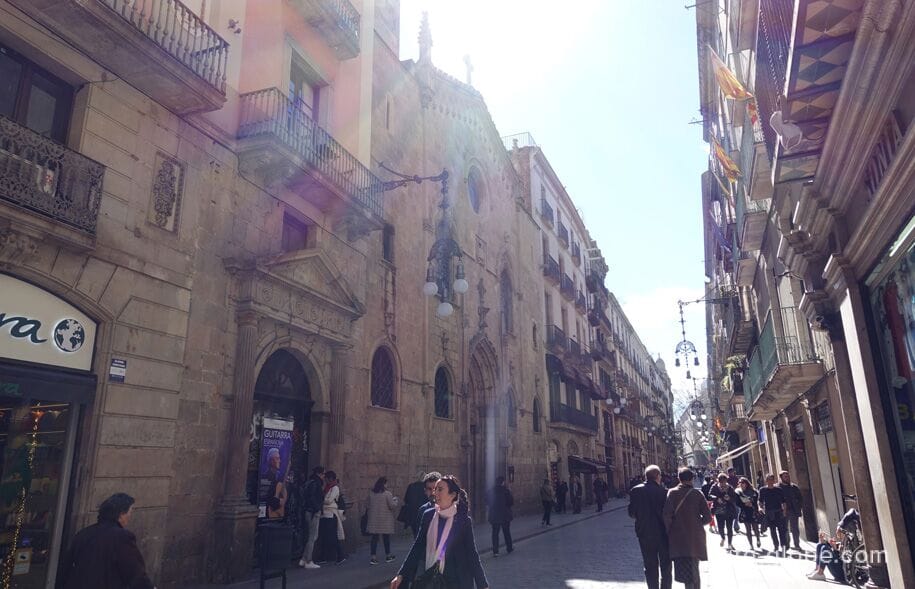

Sights and museums of the Gothic quarter
One of the main attractions of the Gothic quarter is Barcelona Cathedral - Cathedral of the Holy cross and Saint Eulalia also known as Barcelona Cathedral (Catedral de Barcelona / Catedral de la Santa Creu i Santa Eulalia) is the Gothic Cathedral of the 13th-15th centuries and the Archbishop's residence in Barcelona.
The current Cathedral was built on the foundations of a primitive Paleochristian Basilica and later a Romanesque Cathedral.
Facade of the Cathedral and the towers were renovated in the late 19th - early 20th centuries with many elements in the Gothic style. The project ended in 1913 with the construction of the dome.
The Cathedral is dedicated to Eulalia of Barcelona, patron Saint of Barcelona a young virgin who according to Catholic tradition, suffered martyrdom in Roman times. One story says that she was naked in the town square, and snow, suddenly collapsed on the city in mid spring covered her nudity. The enraged Romans put them in a barrel plunging into a barrel with knives and rolled down the street (according to tradition, the one now called Baixada de Santa Eulàlia). The body of Saint Eulalia is buried in the crypt of the Cathedral.
The entrance to the Cathedral is paid, the cost is 7 Euros. On the Elevator you can climb to the terrace of the Cathedral, located on the roof (Elevator access: Monday to Saturday from 10:00 to 12:00 hours).


Near the Cathedral lies a New square (Plaça Nova), founded in 1358. The space of the square is the oldest in Barcelona. On the square is always crowded, there are cafes and restaurants, honest people entertained by street musicians.

To New square from Plaza Catalunya, leads the pedestrian street of Avenida del Portal de l angel (Avinguda del Portal de l'àngel), along which the abundance of shops. The street is part of a large shopping district, which stretches from Avinguda Diagonal to the New square of the Gothic quarter.
This is one of the most visited streets of the city that is always filled with tourists and locals. In addition, the street is notable because it is one of the most expensive streets in Spain, based on the price for the rental of commercial space.
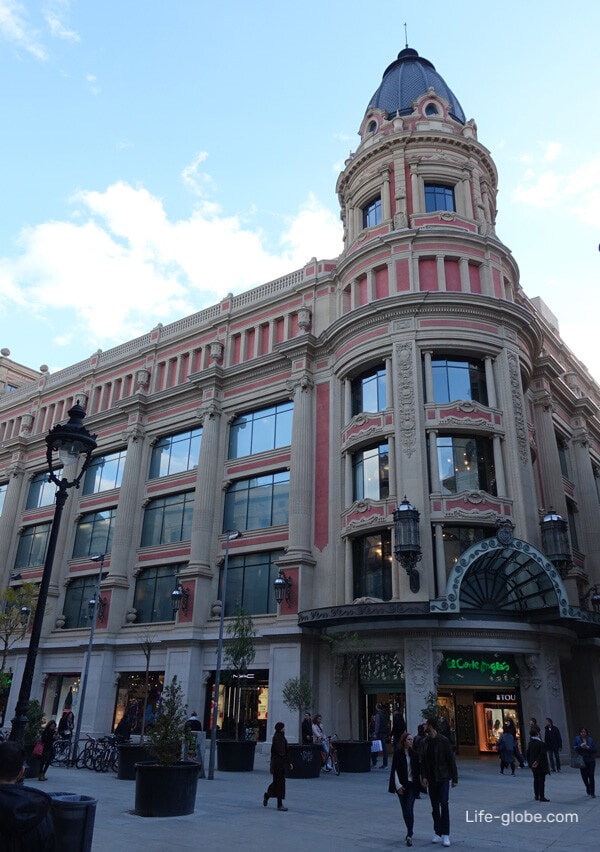
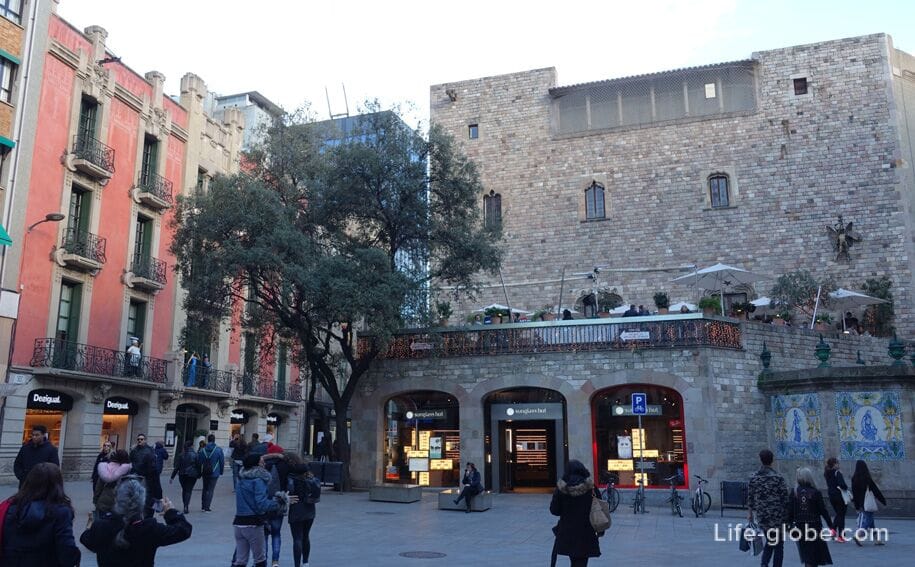
In New square are also remains of Roman and medieval walls and defensive towers that once surrounded the city Barcino.
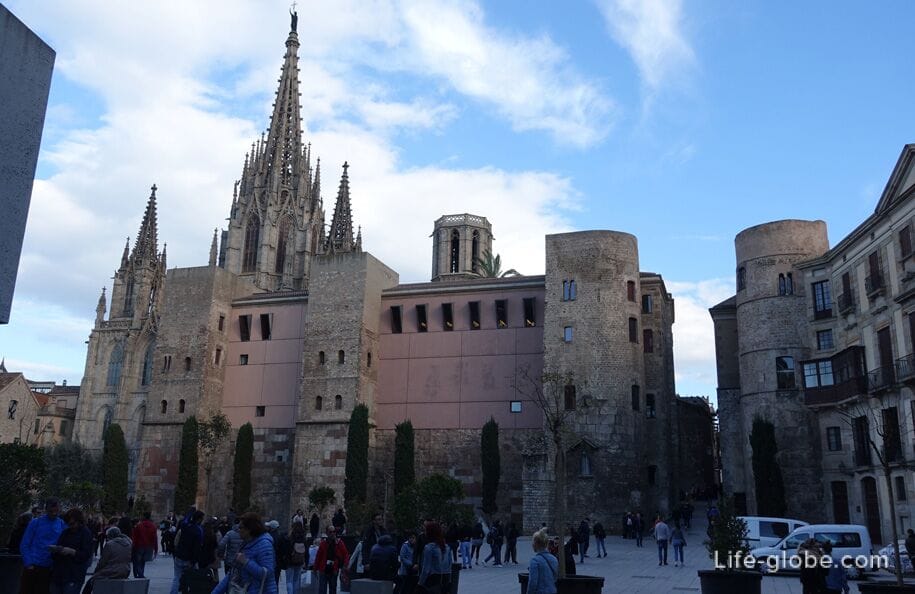
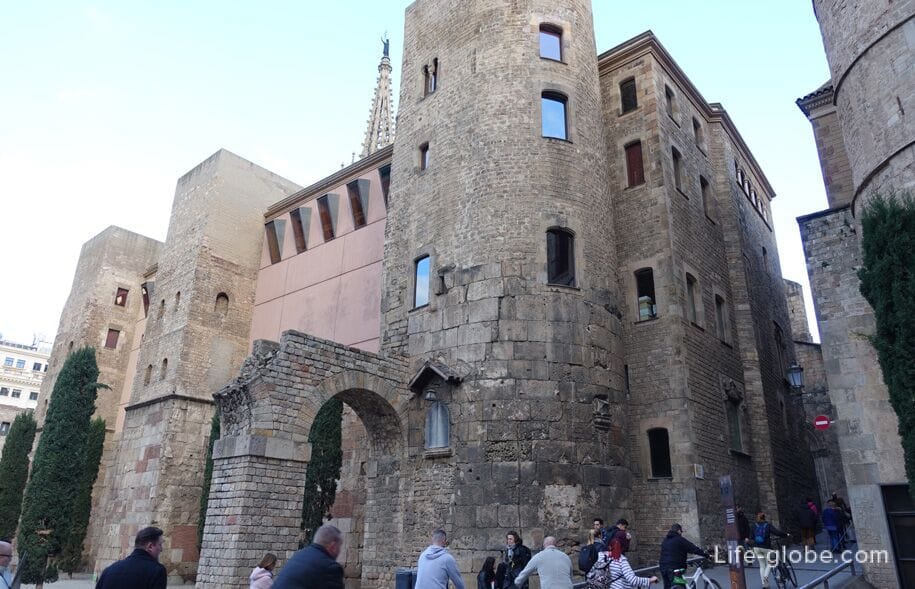
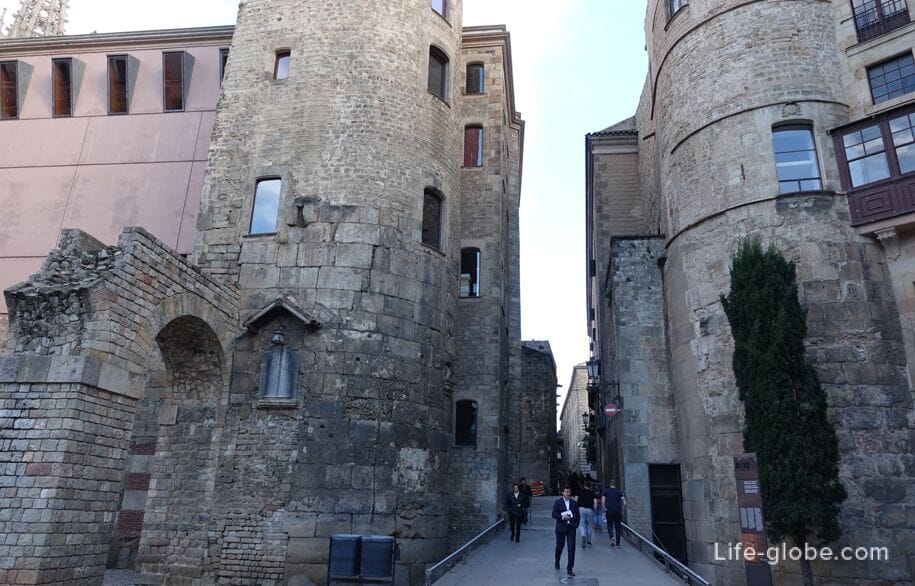
Here is the house of Archdeacon or Casa de Ardiaca (Casa de lArdiaca), located on top of the walls and built in the 12th century, and subsequently underwent several modifications.
In the 14th century the archdeacon Louis Desplat turned the house into a traditional Gothic Palace.
If the New square to walk around the house (and, consequently, remnants of walls), out on the street Carrer de Santa Llúcia, then you can go into the inner yard, decorated with arches and wall mosaics of colored tiles. Also in the courtyard are: high palm tree and fountain in the center.
Currently, the walls of the building is the historic archive of Barcelona, but the entrance to the inner courtyard is free.
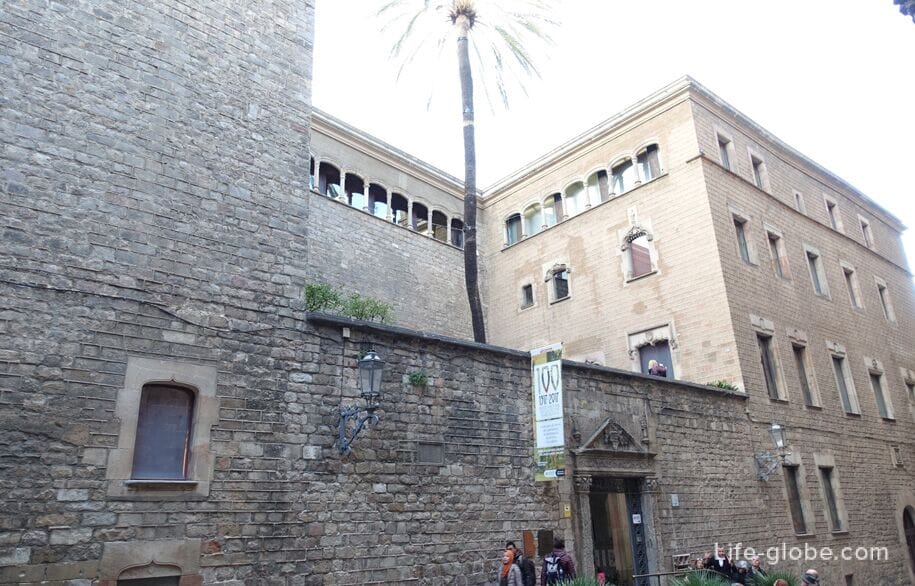
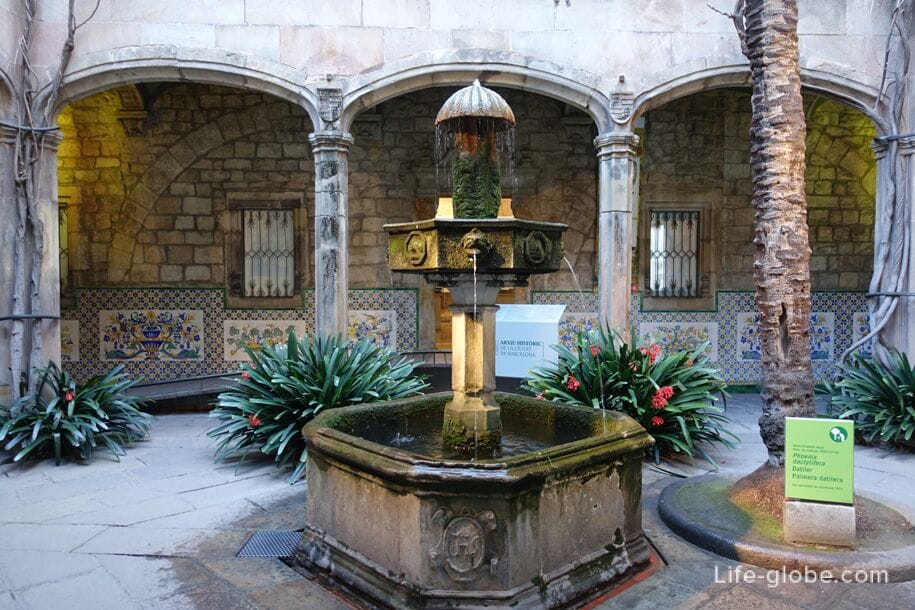
Opposite the entrance to the courtyard of the house of the Archdeacon is St. Lucia's chapel (Capella de Santa Llúcia), adjacent to the Cathedral and being part of it. The chapel was built between 1257 and 1268 over the years as the chapel of the Episcopal Palace, annexe.
The facade of the chapel is characterized by a door with a semicircular arch arch with archivolt and two columns in each band with capitals.
Inside the chapel of Santa Lust are two tombs: the Bishop Arnau de Gurbo the thirteenth century, and Francesco de Santa Coloma fourteenth century.
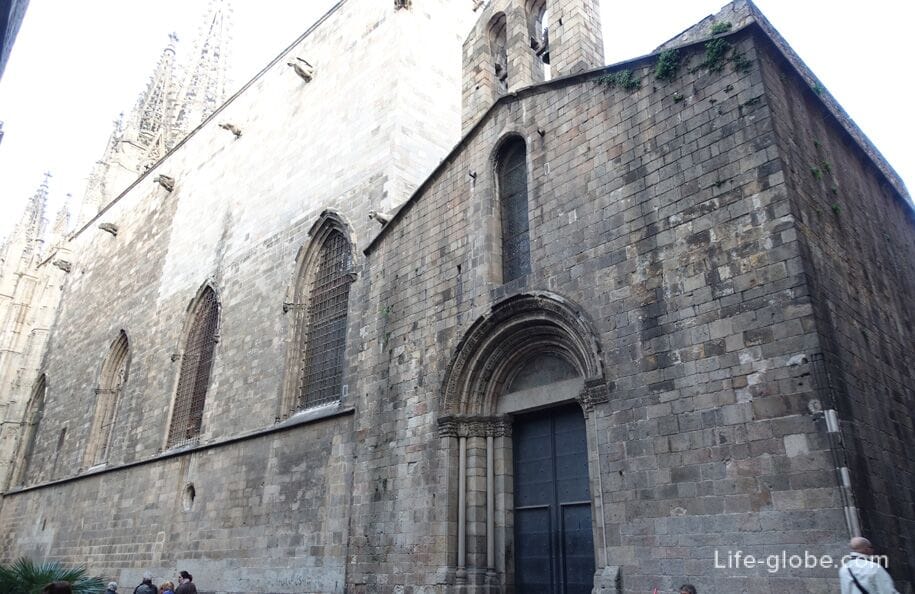
Area Garriga and Bach (Plaça de Garriga i Bachs) which is the monument to the Heroes of 1809, adjacent to the Church of San North (Església de Sant Sever).
The Church was designed by Arno in 1698, and construction will begin next year. In 1703 the Church was consecrated, although the work was not finished until 1705, when it was completed the door and interior trim.
In the future, the restoration and renewal of the Church continued until 1929.

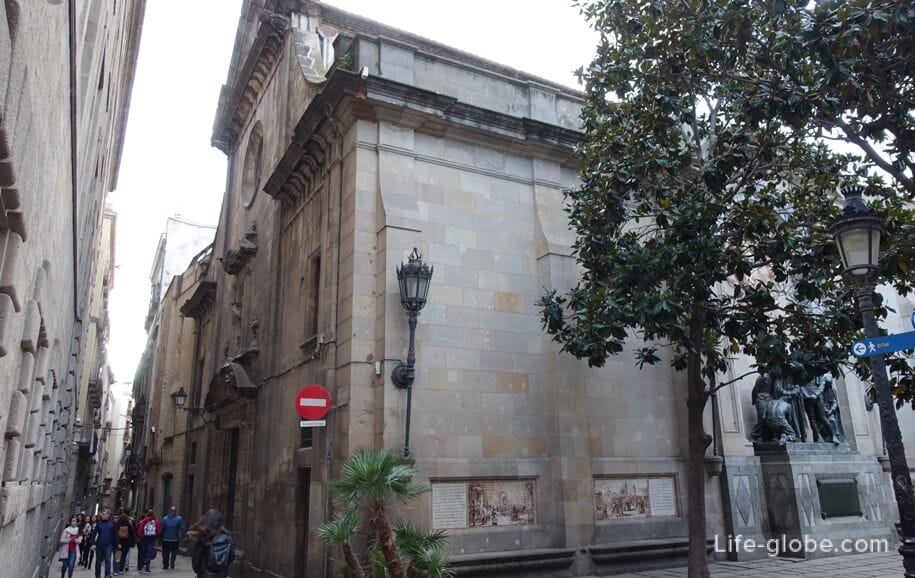
On a small square of Sant Felip Neri (Plaça de Sant Felip Neri) the eponymous Church of St. Philip Neri (Església de Sant Felip Neri), built between 1721 and 1752 in the Baroque style.
From the 30th of January 1938, during the civil war in Spain, the Church came under intense bombing of Italian aviation. On the facade are still visible indentations from the bullets.
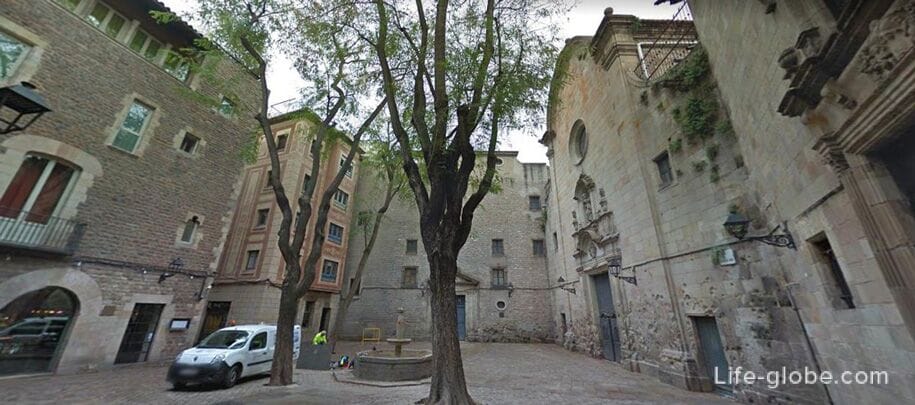
Gothic bridge (Pont Gòtic / Pont del Bisbe) - hinged openwork bridge, built in 1928, crossing the Carrer del Bisbe (Carrer del Bisbe) and connecting the two buildings. This is one of the iconic places of the Gothic quarter and one of the most popular and photographed places in Barcelona.
Pont del Bisbe bears the name of Irureta Obispo - Bishop of Barcelona. In the 30 years he sympathized with carlestam and did everything possible to curb the use of the Catalan language in the Church. When the civil war began, Bishop reportedly fled to the home of the Jewish jewellers, but was found and shot along with all the other residents. There are several messages about this event with some contradictory facts, which are still not fully explained. After the war, in gratitude for his attachment to the victorious Franco sought to elevate the Bishop and put his name on many streets throughout the country.
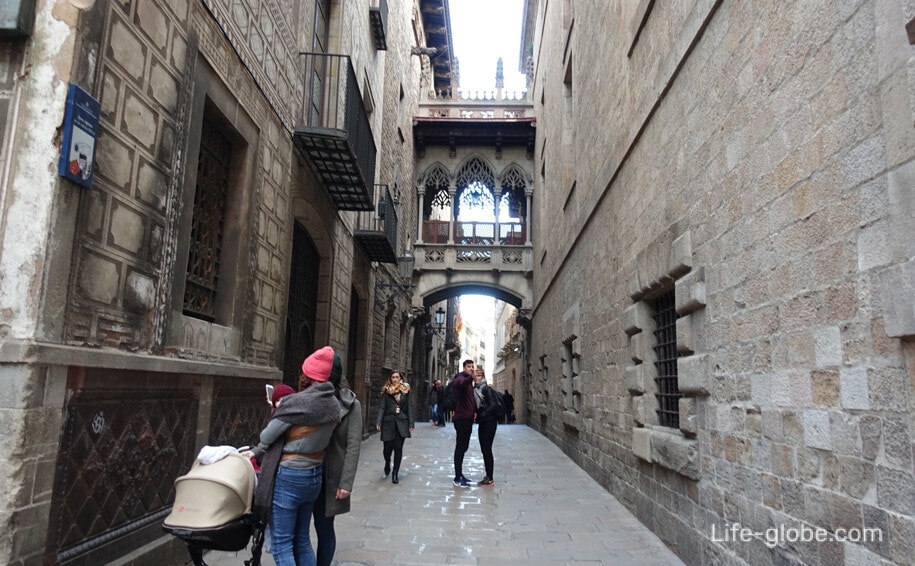
The columns of the Augustus temple (Temple d August) - columns remaining from the Roman temple.
On top of the mountain Taber located the Central part of the forum and the temple that had been destroyed over time, and at the end of the nineteenth century, four columns were found during the construction works of the headquarters of the Centre Excursionista de Catalunya.
It is likely that the construction of temple was started during the reign of Tiberius, the founder of the cult of Augustus.
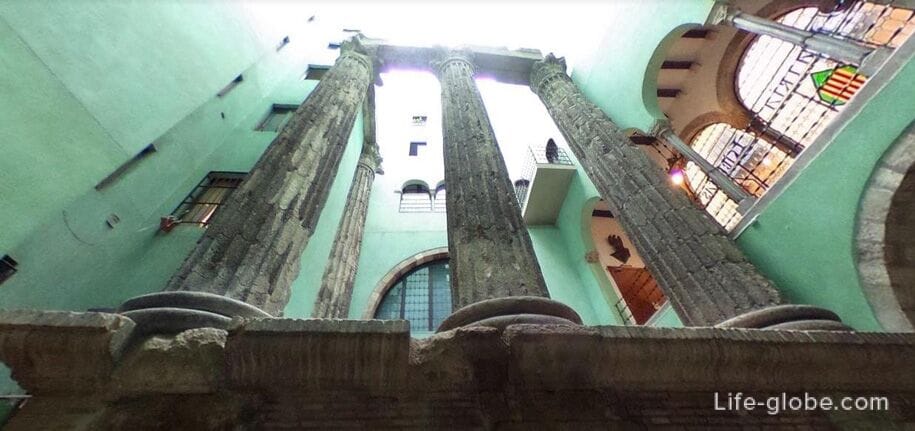
On the left side of the Central facade of the Cathedral is a historical building, which is located in the center of gaudí (Gaudí Exhibition Center - MDB) and Diocesan Museum of Barcelona (Museo Diocesano Pía Almoina).
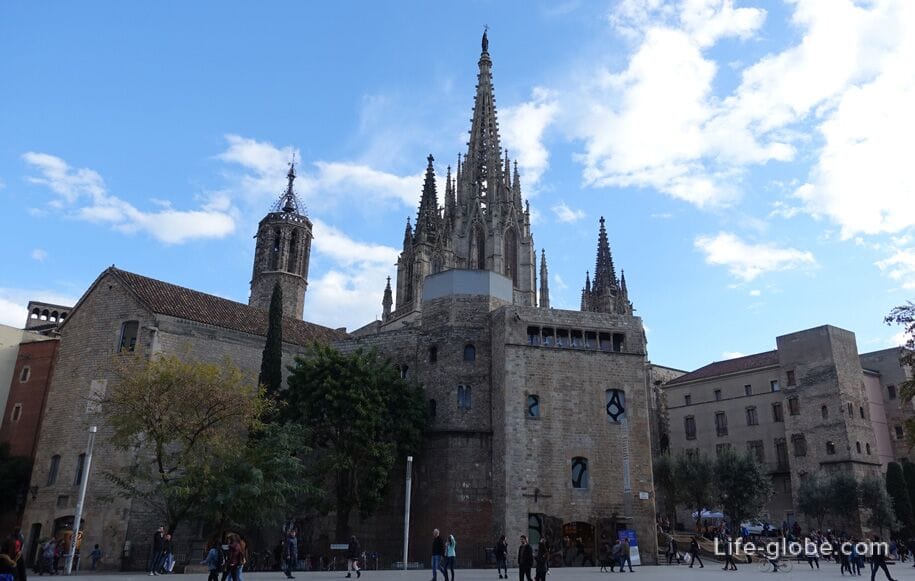
Plaça del Rei or King's square (Plaça del Rei) is a monumental square surrounded by Gothic and Renaissance buildings and enclosed on all sides except the South-West corner.
The buildings around the square represent the architectural ensemble of the medieval era of Barcelona.
The main site of the square is the Royal Palace (Reial Major Palace) - former residence of the counts of Barcelona and kings of Aragon, which is a complex consisting of three buildings and the tower a guard tower of king Martin.
In the complex of the Royal Palace includes: Fat del Tinell (Saló del Tinell) was used as a meeting hall, chapel of Santa Agatha (Capella de Santa Àgueda), a facade which covers the area from the Eastern side and Patellas (Casa Padellàs), originally a private Palace, designed in the late Gothic style with Renaissance elements in the decoration of doors and Windows.
In the complex of the Royal Palace is Barcelona history Museum with underground archaeological excavations of the ancient Roman city of Barcino. Some temporary exhibitions. Read more about Rei square and the Royal Palace in Barcelona...


It is this, the above part of the district, is the core of Barcelona's Gothic quarter.
The Church of Santa Maria del PI or St. Mary's Basilica (Basílica de Santa Maria del Pi) is the Gothic Cathedral of the 14th century.
On the main facade of the Church is a large rose window, an exact copy of the original window 1940, which was destroyed by fire in 1936. Below the window is a Gothic arch of the main entrance.
In the Basilica there is the opportunity to visit the Museum premises, including the Treasury of the Basilica and the crypt, the garden and the bell tower with views of part of Barcelona.
The main facade of the Church overlooks the Piazza Del PI (Plaça Del Pi). Read more about St. Mary's Church PI in Barcelona...
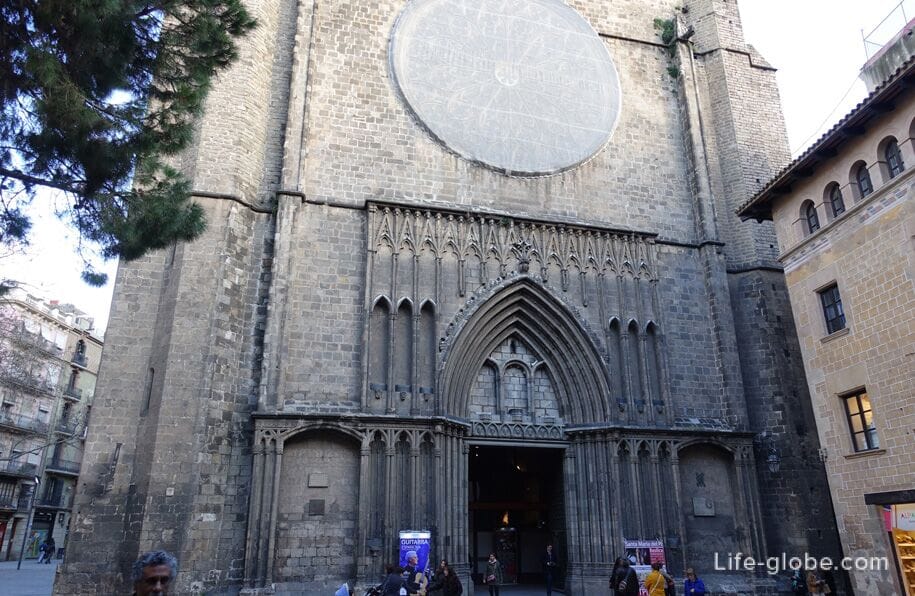
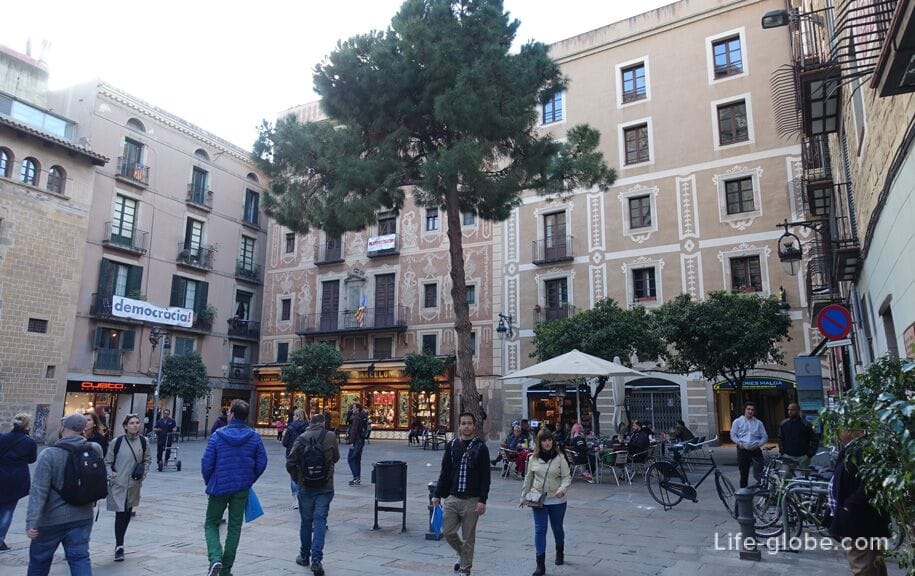
The area of Saint James or Sant Jaume, English: "St. James" (Plaça de Sant Jaume), which has great historical value, although built relatively recently, in the early 19th century.
Now the area Jaume, opposite each other, are:
historical Palace of the Government of Catalonia (Palau de la Generalitat de Catalunya) is Generalitat is one of the few buildings that for many years and is still functioning as the seat of government;
- city hall of Barcelona or Casa de La Ciutat (Casa de la Ciutat), the construction of which took place over several centuries. For this reason the Palace has a mixture of styles. Read more about the St. Jacob square in Barcelona...
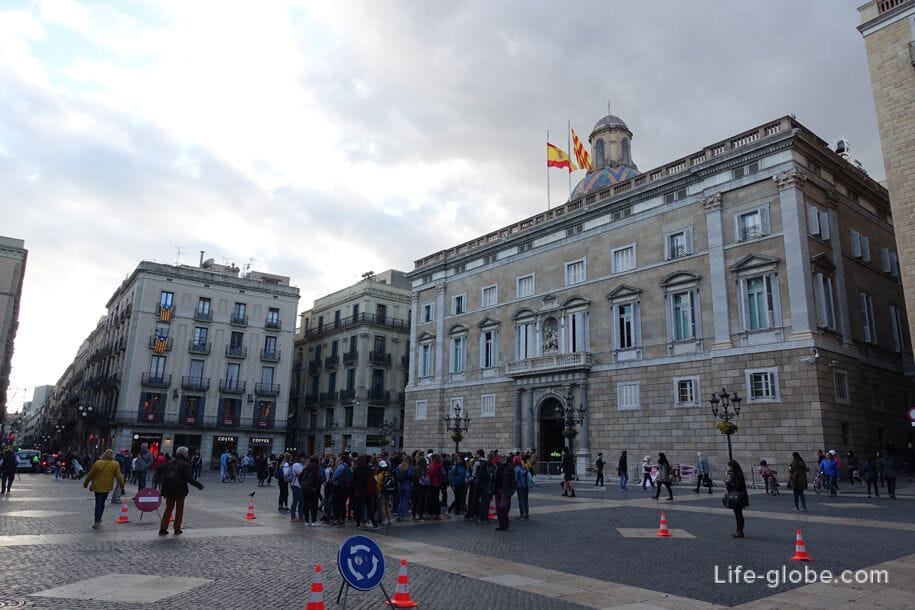
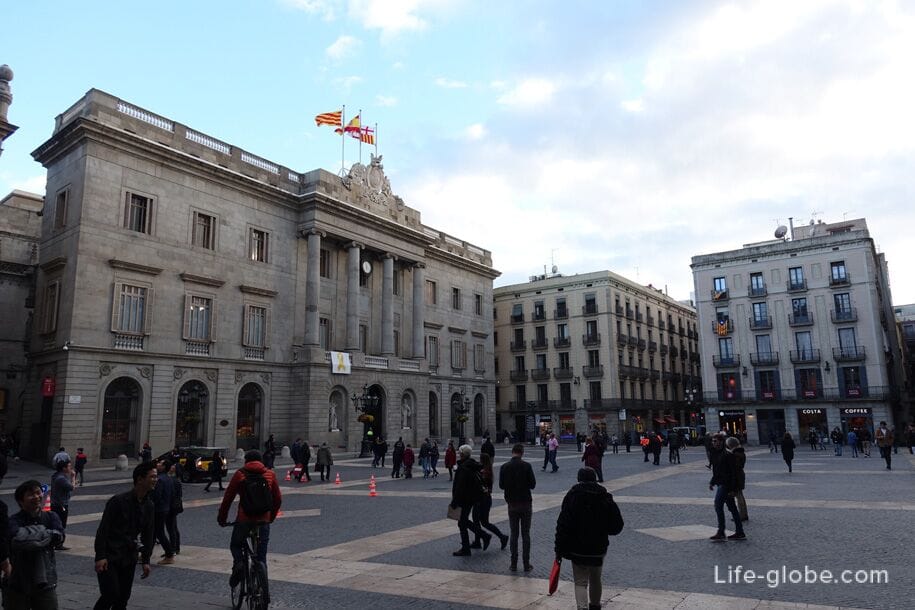
San Miguel Square (Plaça de Sant Miquel) on which stands the monument of Castellaras (Monumento a los Castellers) 2012 - the builders of human towers.
Castells - the so-called sports and cultural activities, very popular in Catalonia, where participants become each other's shoulders in the form of a high tower.
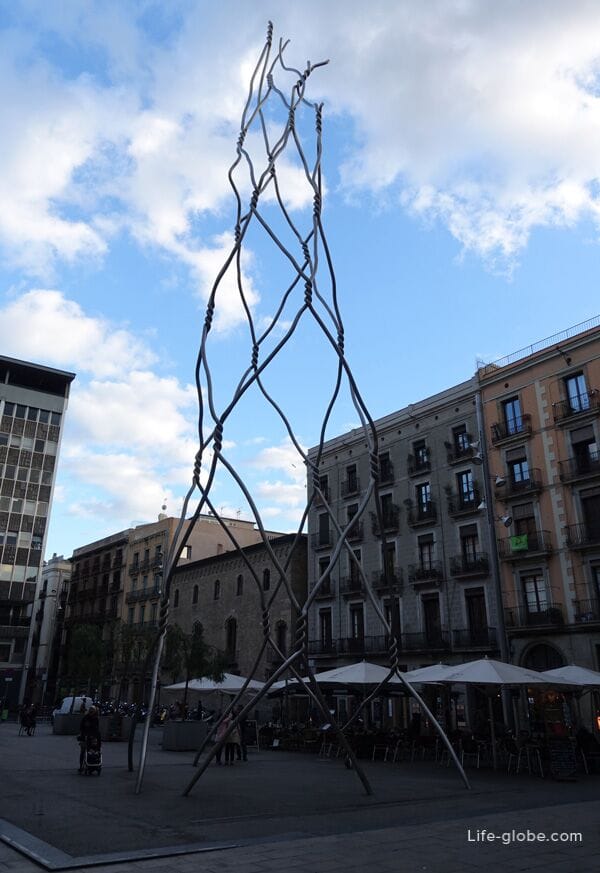
The Royal square (Plaça Reial) is one of the most famous squares and sights of Barcelona.
Originally, this area was occupied by the Capuchin convent of Santa Madrona, which was destroyed by fire and demolished in 1835. Later in the 19th century, Francesc Daniel Molina and Catamayo designed the area, which is now twinned with the Plaza Garibaldi in Mexico city.
Lampposts in the square were designed by the famous architect Antonio Gaudi.
Around the square are cafes, restaurants and some famous bars and clubs of the city, including Sidecar, Jamboree and Karma, and the center of the square decorated with a fountain. Also on the square are a 5-star hotel DO Plaça Reial G. L. with Breakfast, 2-star guest house Pension Villanueva, the hotel Roma Reial with Breakfast and Enjoybarcelona apartments.
Square hold open air festivals, including the annual September festival of La Mercè.
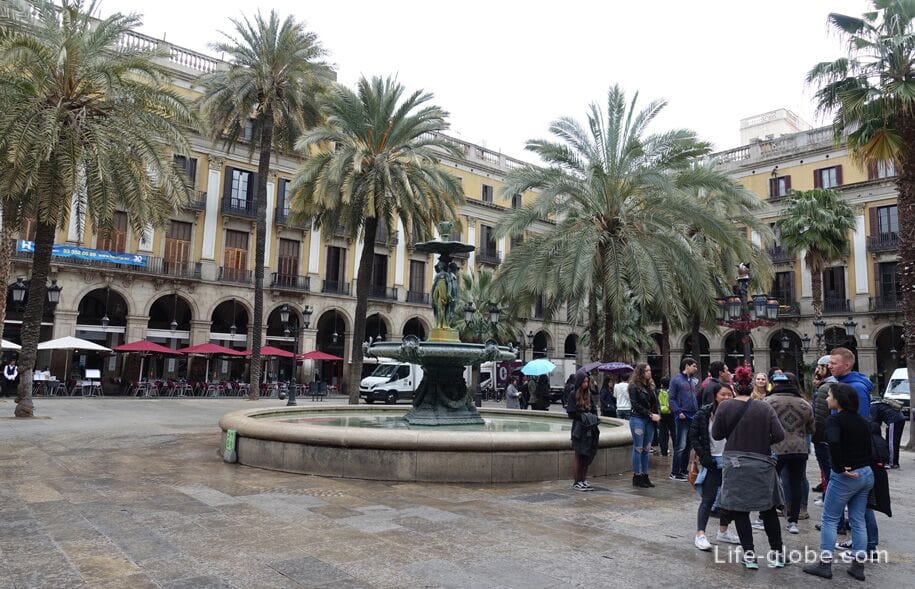
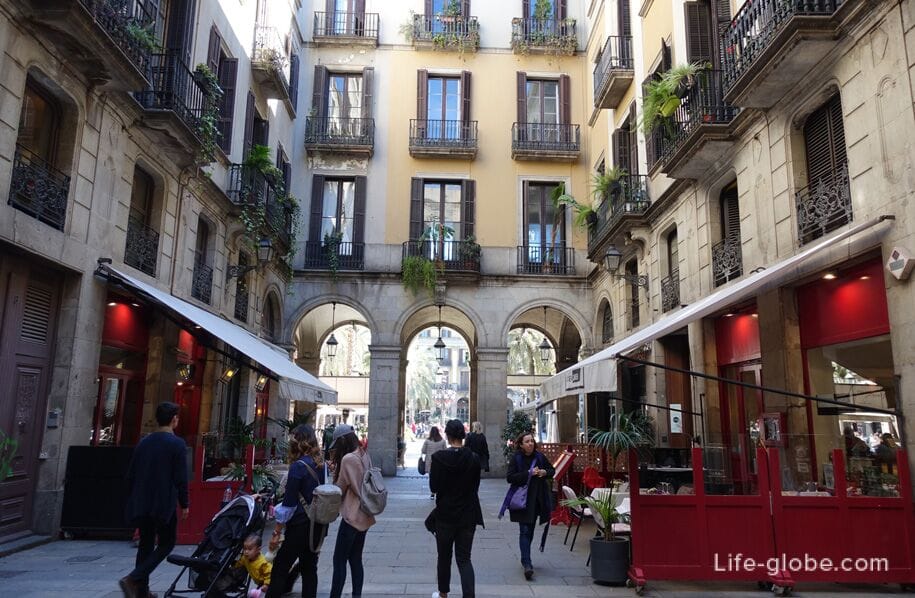
Basilica of Saints Justus and Pastor (Basilica of Saints Justus and Pastor), in 1948, became the sixth Barcelona received the title of minor Basilica, a title was assigned by Pope Pius XII.
The construction of the Gothic Church which you see today, started on 1 February 1342 and lasted until 1574. The Basilica was built on an older Romanesque Church on the site of the former chapel of Sant Celoni. The construction of the facade and the bell tower lasted until the 16th century.
During the 19th century was the treason of internal and external forms of the Church. The current neo-Gothic facade of the Church was between 1880 and 1887 years.
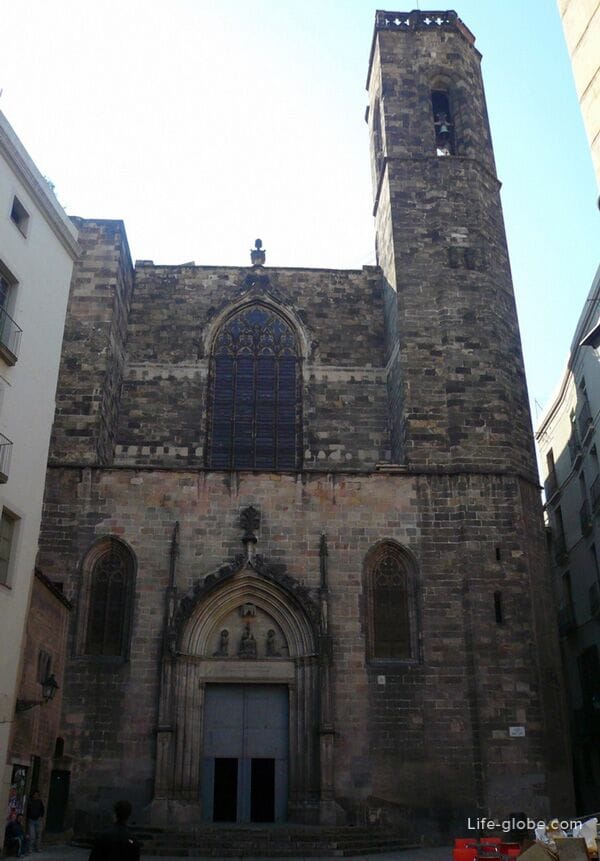
In the square near the Central facade of the Church of Saints Justus and Pastor is the fountain Giusto (Font de San Just), built probably in the 14th - 15th centuries and originally had a Gothic style, transformed in 1831, in the era of Neoclassicism.
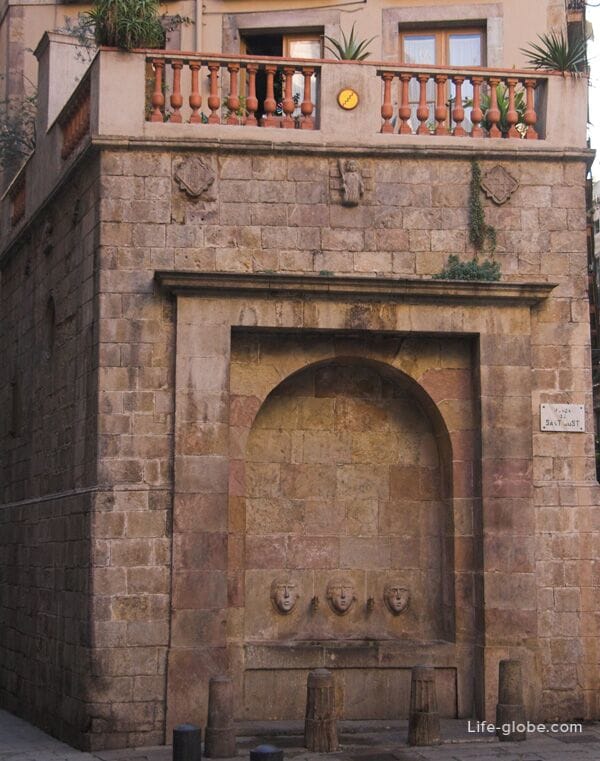
The Church of St. Anna or St. Anna (Església de Santa Anna) - a Romanesque Church and an ancient monastery, connected with the order of the Holy Sepulchre of Jerusalem from the 12th century, located close to Barcelona Cathedral. In 1881 the Church was declared a national monument.
The order of the Holy Sepulchre sent monks in 1141 to settle in Barcelona. In 1145, the year there is evidence of the first Abbot, Bernat, who was responsible for the new monastery in Barcelona.
In 1177 there was evidence on the building of the new Church, located at the current location. Construction continued for the next three centuries, in the Gothic period. In 1215, Pope innocent III confirmed the property of the monastery.
At the moment the original Romanesque structure of the Church with a square apse and a cruciform plan covered with weapons pointed arch of the 13th century. Notable is the tomb of a knight Miquel de Boer, Dating from the 16th century.

The Museum of erotica in Barcelona (Museu Eròtic de Barcelona), a facade facing the street of La Rambla and opposite the famous Boqueria market.
The Museum acquaints its guests with the culture of eroticism, which is part of the history of mankind.
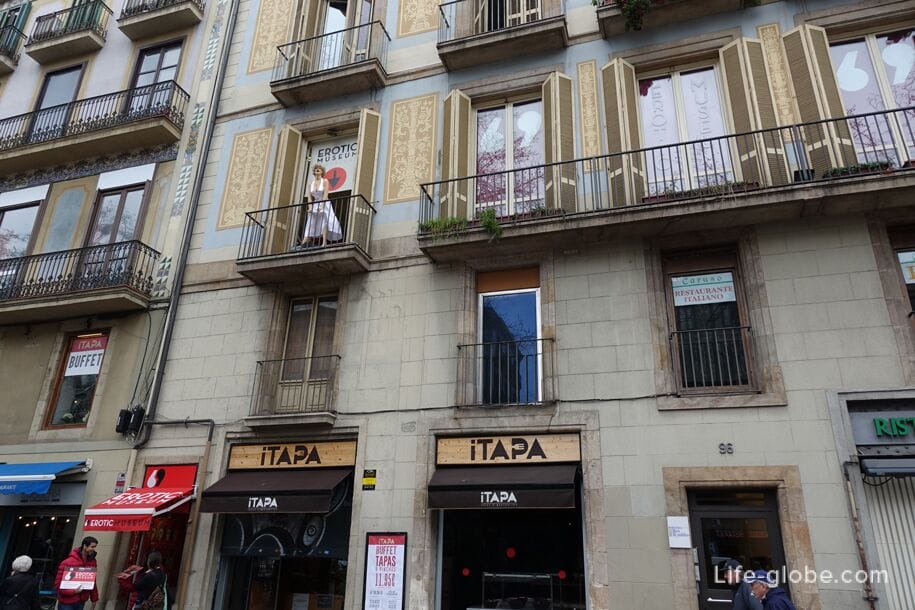
The Museum and the hash marijuana & hemp in Barcelona (Hash Marihuana & Hemp Museum Barcelona), opened in 2012 and represents the collection associated with cannabis, from cultivation to consumption, from ancient ritual to use in modern medicine. The Museum also has an exhibition in Amsterdam. Address: Carrer Ample, 35, Gothic quarter, Barcelona.
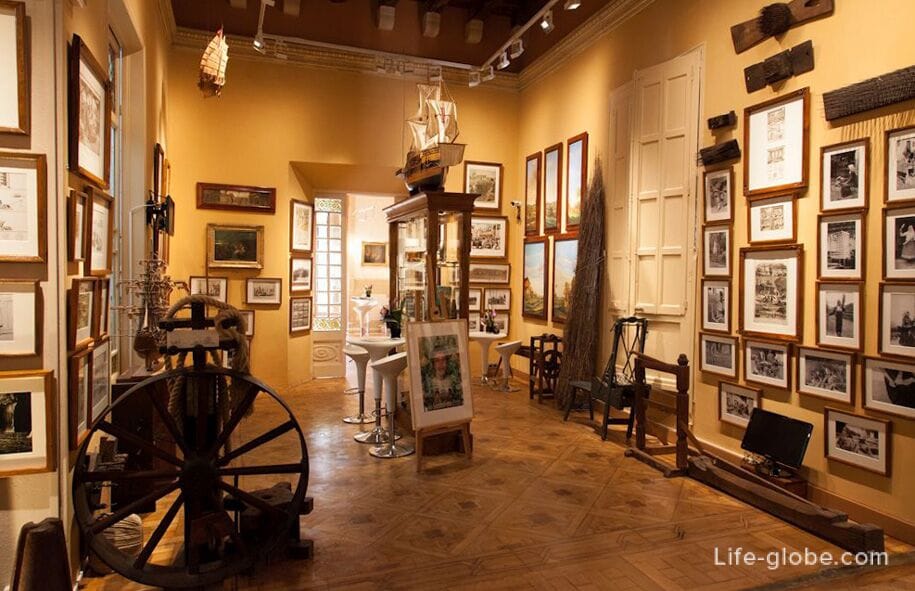
Basilica of the virgin of Mercy or the Basilica of our lady of Mercy (Basílica de la Mercè) - the Church in the Baroque style, built between 1765 and 1775 years.
Dome topped with the iconic statue of the virgin Mary, which is visible from the seafront. This Church was the second in Barcelona, received the title of minor Basilica, which was only preceded by Barcelona Cathedral. The title was awarded in 1918 by Pope Benedict XV, in the sign of the seven hundredth anniversary of the apparition of the virgin to Saint Peter of Nolasco, the founder of the Order of Mercy.

Columbus Avenue (Passeig de Colom), along which you can see the historic buildings and exciting sculptures of large dimensions.
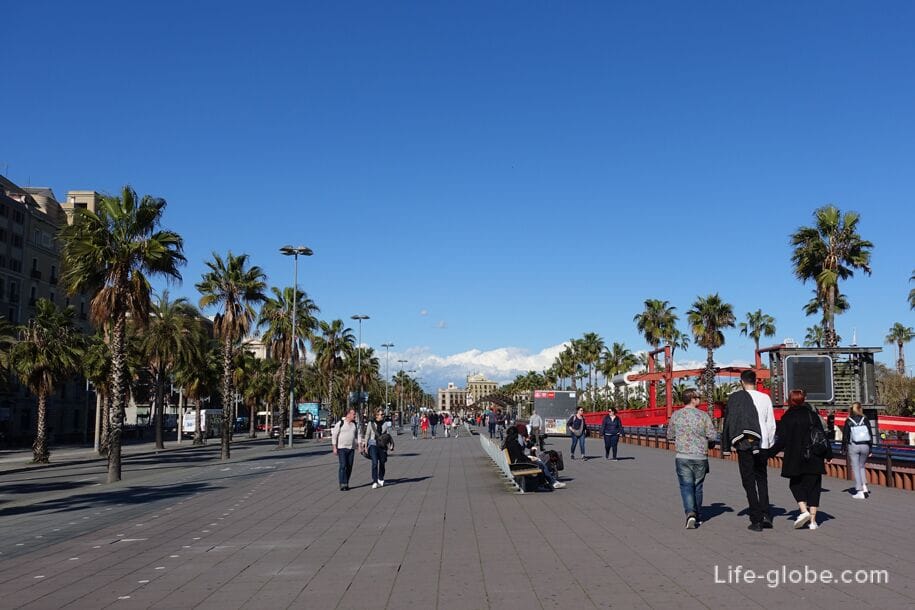

To the Gothic quarter of Barcelona is also part of the seaport - the Port Vell (Port Vell), where the main sights as well as places for walking and recreation, including: the seafront promenade, a Marina, a historical monument, an old building of the port authority, shopping center "Maremagnum" and Europe's largest aquarium L Aquàrium.
Part of the port of Barcelona refers to the Barceloneta quarter, also being a part of Barcelona's Old town. Read more about sea port of Barcelona...
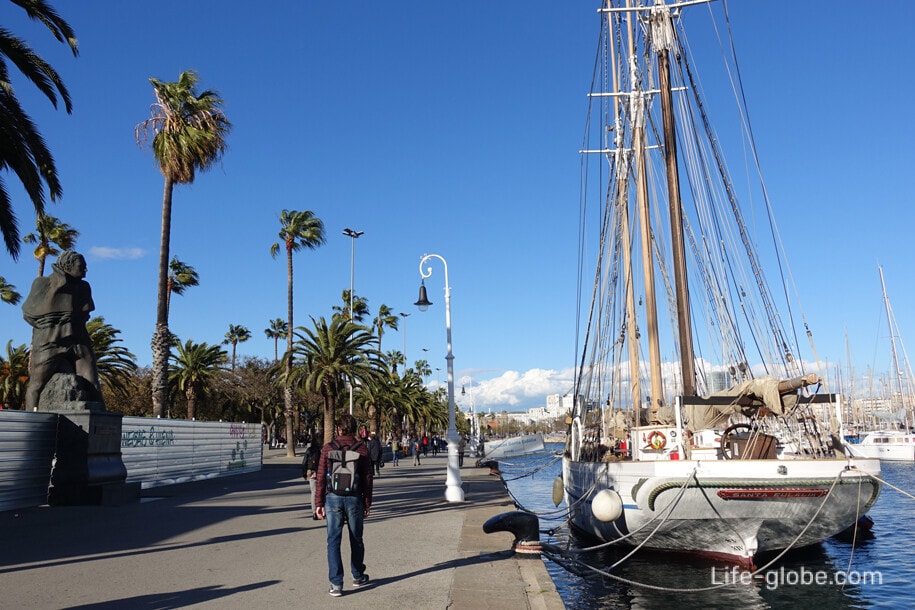
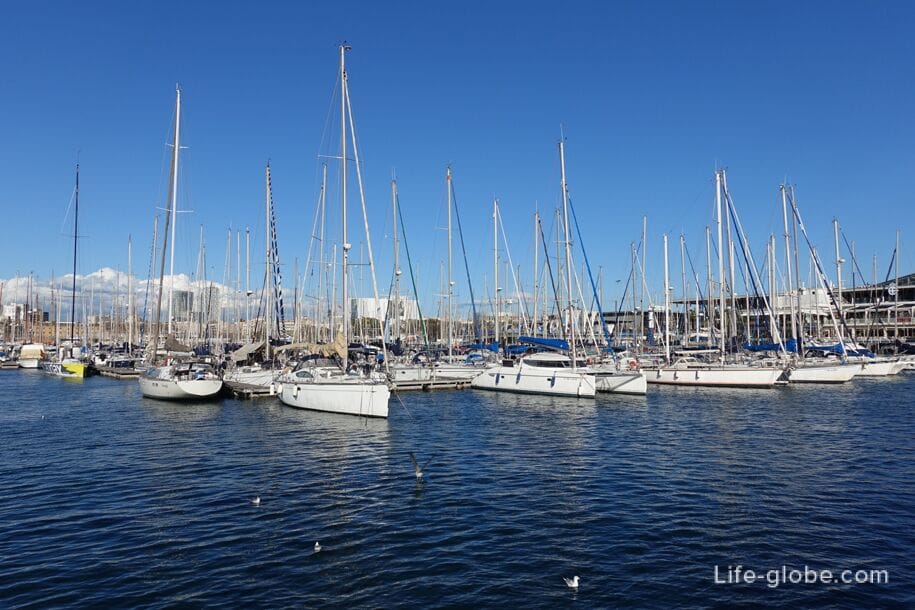
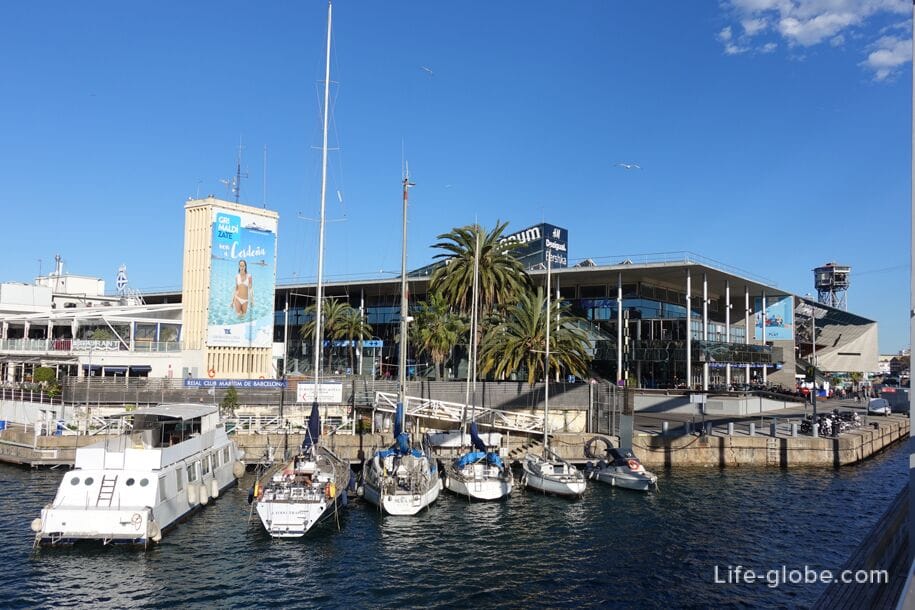
Tours of the Gothic quarter of Barcelona
Where to stay in the Gothic quarter
All accommodation (hotels, apartments, guest houses, hostels etc.) in the Gothic quarter of Barcelona and the surrounding area, you can view and book here
The Gothic quarter of Barcelona on the map





